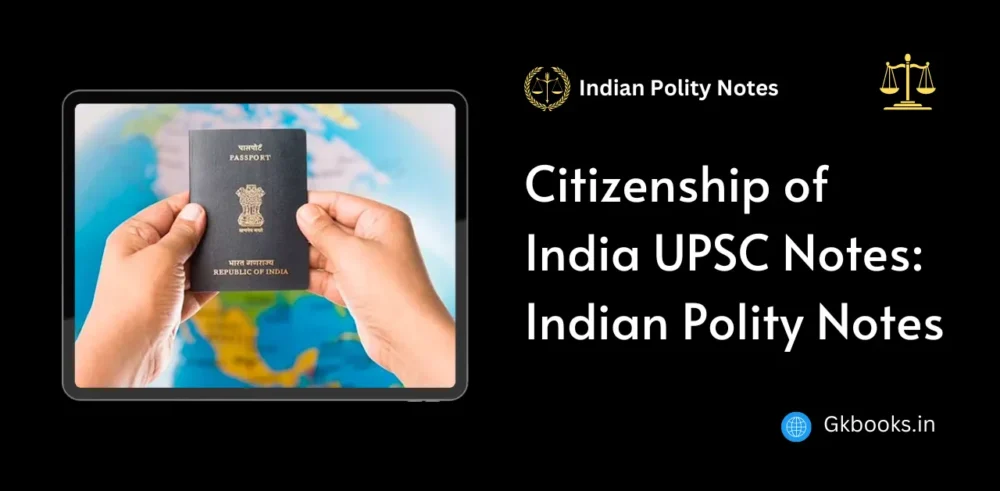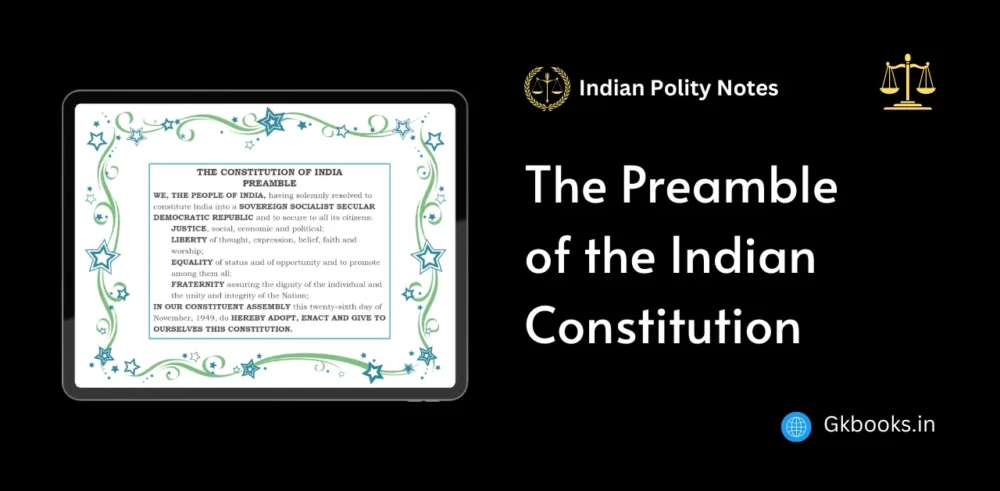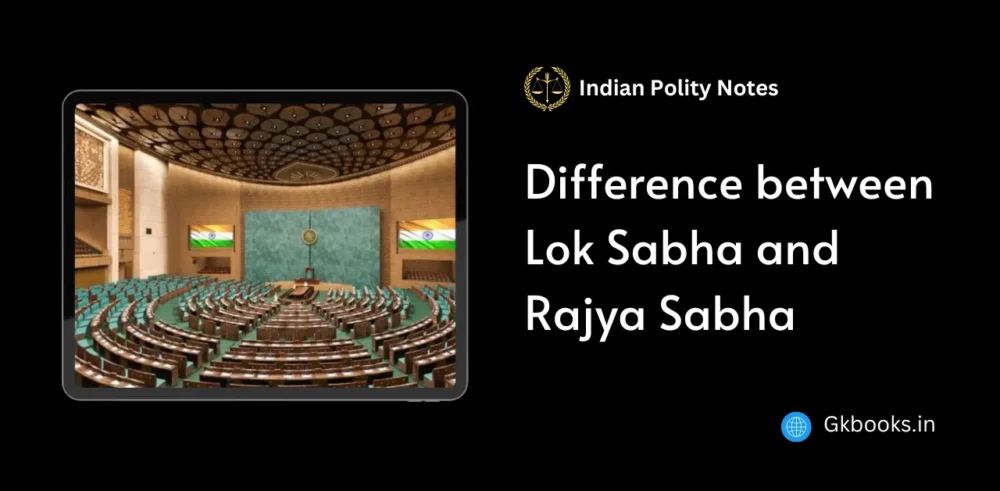Part I of the Indian Constitution is titled “The Union and its Territory.” It covers Articles 1 to 4 and includes laws about India’s formation as a country and the union of states that make up the nation.
This part of the constitution explains the rules for establishing, renaming, merging, or changing the borders of states. Articles under Part I were used when West Bengal was renamed and for creating new states like Jharkhand, Chhattisgarh, and Telangana.
Article 1
Name and territory of the Union
(1) India, that is Bharat, shall be a Union of States.
(2) The States and the territories thereof shall be as specified in the First Schedule.
(3) The territory of India shall comprise –
- (a) the territories of the States;
- (b) the Union territories specified in the First Schedule; and
- (c) such other territories as may be acquired.
Read Also: The Preamble of the Indian Constitution: Full Explanation
Article 2
Admission or establishment of new States
Parliament may by law admit into the Union, or establish, new States on such terms and conditions as it thinks fit.
Article 2a: Sikkim to be associated with the Union.
Article 3
Formation of new States and alteration of areas, boundaries, or names of existing States
Parliament may by law –
(a) form a new State by separation of territory from any State or by uniting two or more States or parts of States or by uniting any territory to a part of any State;
(b) increase the area of any State;
(c) diminish the area of any State;
(d) alter the boundaries of any State;
(e) alter the name of any State:
Conditions for Introducing Bills in Parliament
A Bill related to the establishment, renaming, merging, or altering the borders of states can only be introduced in either House of Parliament if:
- The President recommends the Bill.
- If the Bill affects the area, boundaries, or name of any state, it must be sent by the President to the Legislature of that state for its opinion. The state must express its views within the time specified by the President or any extended period allowed by the President. Only after this period has expired can the Bill proceed.
Explanation I: In this context, “State” includes Union territories in clauses (a) to (e), but in the proviso, “State” does not include Union territories.
Explanation II: The power given to Parliament by clause (a) includes the ability to form a new State or Union territory by combining parts of existing States or Union territories.
Read Also: Difference between Lok Sabha and Rajya Sabha: Complete Details
Article 4
Laws made under articles 2 and 3 to provide for the amendment of the First and the Fourth Schedule and supplemental, incidental, and consequential matters
Provisions for Amending Schedules and Related Matters
- Any law mentioned in Article 2 or Article 3 must include changes to the First Schedule and the Fourth Schedule as needed to implement the law. It may also include additional related provisions, such as rules about representation in Parliament and state legislatures, as Parliament sees fit.
- Such a law will not be considered an amendment to the Constitution under Article 368.
The Union and the Territory (Articles 1- 4): Key Info
Territorial Waters vs. International Waters
Territorial waters and exclusive economic zones (EEZ) are included in the states or union territories unless listed separately in Schedules 1 and 4 of the constitution.
- Article for Sikkim’s inclusion in India: Article 2a.
- Article for Telangana’s inclusion in India: Article 3.
Article 3 was amended by the Constitution (Fifth Amendment) Act on December 24, 1955.
Part I of the constitution doesn’t mention India as a federal state but uses the term “Union of States.”
Exclusive Economic Zone (EEZ):
- Defined by the United Nations Convention on the Law of the Sea.
- Extends up to 200 nautical miles (370 km) from a country’s coast.
- Gives a state special rights to explore and use marine resources, including energy production from water and wind.
Difference Between Territorial Waters and EEZ:
- Territorial Waters: The country has full control over these waters.
- EEZ: The country has rights only below the sea surface. The surface waters are international waters.
Constitution (40th Amendment) Act, 1976:
- Article 297 was updated to give the Union of India control over all resources within territorial waters, the continental shelf, or the EEZ.
Maritime Zones Act, 1976:
- Enacted by the Indian government to establish sovereign rights over these areas when dealing with other countries.
Taxation and Royalty:
- It is unclear if states can tax or charge royalties on resources extracted from territorial waters and the EEZ. This is still under the states’ jurisdiction according to item 50 of the state list in the Seventh Schedule of the Constitution.
State Creation or Destruction:
- The consent of the concerned state is not mandatory under the Indian Constitution. However, the bill must be sent to the state legislature for its opinion.
- The President of India’s recommendation is required for bills concerning the creation or renaming of states (Article 3). This is not necessary for the creation of new states under Article 2.
More Indian Polity Notes:






